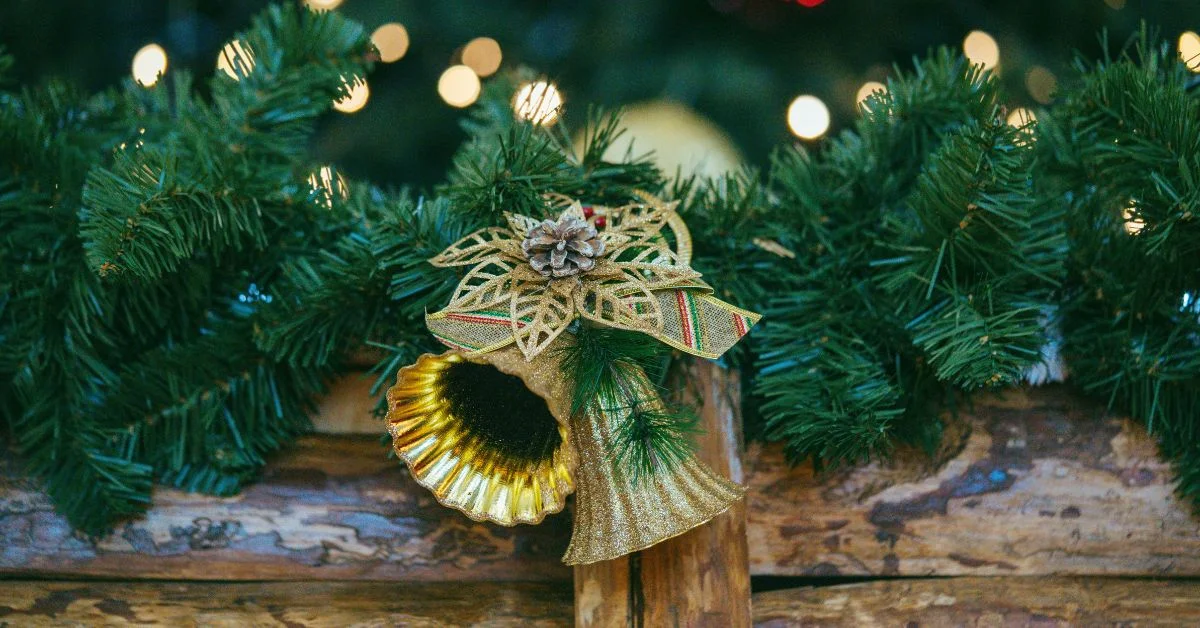The “12 Days of Christmas” has endured for centuries—not just as a carol, but as a cultural tradition that continues to evolve. Among the most popular expressions of this tradition are the 12 Days of Christmas ornaments: intricately designed pieces, often handcrafted, that represent each day and its symbolic gift from the famous holiday song.
Whether you’re an ornament collector, a holiday decorator, or simply someone interested in Christmas traditions, understanding the deeper meaning and modern evolution of these ornaments adds a new dimension to your holiday celebration. In this in-depth guide, you’ll discover where the idea comes from, what the twelve gifts symbolize, how ornaments have changed through history, and how today’s crafters, collectors, and designers are giving them new life.
The Origins of the “12 Days”
The “12 Days of Christmas” refers not to the days leading up to Christmas, but the twelve days following it—beginning on December 25 and ending on January 5, also known as Twelfth Night. Traditionally observed in Christian liturgical calendars, this span marks the time between Christ’s birth and the arrival of the Magi on Epiphany.
The song itself, dating back to at least the 18th century in England and possibly earlier in France, was originally a cumulative rhyme meant for memory games or entertainment during the holiday season. It wasn’t until the 20th century that the verses became closely associated with gift-giving and visual storytelling through decoration, especially in the form of collectible ornaments.
The Twelve Gifts Explained
Each day in the carol presents a symbolic “gift.” These are not arbitrary—they have been interpreted variously as religious symbols, cultural metaphors, or expressions of abundance. Here’s a quick breakdown of each:
| Day | Gift | Interpretation |
|---|---|---|
| 1 | Partridge in a Pear Tree | Symbol of Christ or peace |
| 2 | Two Turtle Doves | Love and fidelity |
| 3 | Three French Hens | Faith, hope, and charity |
| 4 | Four Calling Birds | The four Gospels |
| 5 | Five Golden Rings | The Pentateuch (first five books of the Bible) |
| 6 | Six Geese a-Laying | Six days of creation |
| 7 | Seven Swans a-Swimming | Seven sacraments or virtues |
| 8 | Eight Maids a-Milking | Beatitudes or humility |
| 9 | Nine Ladies Dancing | Fruits of the Holy Spirit |
| 10 | Ten Lords a-Leaping | Ten Commandments |
| 11 | Eleven Pipers Piping | Eleven faithful apostles |
| 12 | Twelve Drummers Drumming | Twelve points of doctrine in the Apostles’ Creed |
While not everyone subscribes to these symbolic interpretations, many ornament designers incorporate these traditional meanings into their artistic representations.
The Rise of Christmas Ornaments
Christmas ornaments began as simple handmade items in the 16th century in Germany, made from fruits, nuts, and cookies. In the 19th century, glassblowers in Lauscha, Germany, began crafting more elaborate glass ornaments that made their way into American homes via import. By the mid-20th century, Christmas ornaments had evolved into collectibles, often passed down through generations.
The 12 Days of Christmas ornaments fit into this legacy by offering both aesthetic appeal and storytelling value. As the carol is itself a list, it naturally lends itself to a series of twelve ornaments, each with its own identity and design challenge.
From Tradition to Trend: A New Era for the 12 Days
In recent years, designers and crafters have reimagined the traditional motifs of the 12 Days of Christmas. No longer limited to Victorian depictions or Biblical symbolism, modern ornaments reflect contemporary design trends:
1. Minimalist Interpretations
Sleek, Scandinavian-inspired sets may feature each day’s motif as a silhouette or line drawing, making them compatible with modern, minimalist decor.
2. Multicultural Representations
Some artists have adapted the figures to reflect global holiday traditions—French hens in actual French costume, drummers from various cultural backgrounds, or dancers modeled after different global dance styles.
3. Sustainable Materials
From laser-cut bamboo to upcycled paper mâché, environmentally conscious artists are creating 12 Days sets using low-impact materials.
4. Personalized Ornaments
Some makers offer customizable options—like inserting names, dates, or family traits into each day’s ornament. For example, the “Two Turtle Doves” might become a wedding keepsake, while the “Five Golden Rings” could commemorate an anniversary.
Collecting 12 Days of Christmas Ornaments
Starting Your Collection
Collectors often begin with a single set and build over the years. Some are drawn to the intricate detail of glass-blown ornaments, while others prefer handmade ceramic, wood-carved, or even embroidered pieces.
Popular Makers and Series
Notable companies that have produced themed 12 Days of Christmas sets include:
- Hallmark Keepsake Ornaments
- Lenox China’s annual series
- Waterford Crystal’s interpretations
- Department 56 and their folk-art takes
- Local artisans and Etsy creators
Tips for Collectors
- Consistency matters: Some prefer keeping to one medium or artist for all 12.
- Display methods: Consider 12 small trees or a mantelpiece garland with 12 hooks.
- Storage and care: Keep in acid-free containers, especially for vintage or delicate materials like paper or glass.
- Appraisal: Certain vintage sets are now quite valuable, especially complete sets from discontinued lines.
DIY: Crafting Your Own 12 Days Ornaments
For those who love a creative challenge, crafting your own set is deeply rewarding. Whether for a family heirloom or a meaningful holiday project, DIY ornaments add a personal touch.
Material Ideas
- Felt and fabric for sewn characters
- Wood discs with painted icons
- Polymer clay for sculpted miniatures
- Embroidery hoops with stitched images
- Paper crafts with decoupage or origami
Getting Started
- Sketch all twelve before beginning—ensure consistency in size, style, and color.
- Research design inspiration, but don’t feel bound by tradition.
- Consider involving family members, assigning one ornament to each person.
Crafting a set over time, even a year or more, can become a meaningful tradition in itself.

Displaying the 12 Days Ornaments
How you display the ornaments is as important as the ornaments themselves. Here are a few curated ideas:
Traditional Tree
Place them evenly across the tree, perhaps in sequential order spiraling from top to bottom.
Garland Display
A fireplace mantle or stair rail allows the ornaments to be evenly spaced and admired.
Advent Calendar Style
Reveal one each day from December 25 to January 5, aligning with the original intent of the song.
Shadow Box Frames
Perfect for smaller spaces or delicate ornaments. Mount each in its own compartment and hang the frame on a wall.
The Emotional Significance
Unlike generic baubles, 12 Days of Christmas ornaments are layered with narrative. They speak to tradition, legacy, and personal meaning. Many families use them to:
- Tell intergenerational stories
- Celebrate milestones (weddings, births, faith)
- Establish a unique yearly tradition
- Pass down handcrafted heirlooms
What makes these ornaments so enduring isn’t just their beauty—it’s their ability to connect people to both the past and each other.
Modern Takes and Technology
As with every holiday tradition, the 12 Days of Christmas has found new life in digital and interactive forms:
Augmented Reality Ornaments
Some designers now offer AR-enabled ornaments—scan them with a phone to see animations or hear the song.
Smart Ornaments
Ornaments embedded with NFC tags can tell the story of the corresponding day or even play a snippet of the carol.
NFTs and Digital Collectibles
The rise of digital ornament art has led to virtual 12 Days of Christmas sets. Though not physically tangible, they offer another form of collecting and storytelling.
Beyond Christmas: The Broader Cultural Impact
The 12 Days theme has inspired various forms of media, from parody songs to animated holiday specials. The ornaments themselves often reflect the broader zeitgeist:
- Feminist reinterpretations where maids and ladies are reimagined as leaders
- Musical themes with references to global instruments for the drummers and pipers
- Animal welfare-inspired designs where birds are realistic or endangered species
The enduring popularity of the 12 Days ornaments lies in this blend of nostalgia and adaptability.
Conclusion
The 12 Days of Christmas ornaments represent more than seasonal décor—they’re a celebration of storytelling, craftsmanship, and heritage. From their roots in a centuries-old carol to their reinvention in today’s art and technology, these ornaments continue to evolve, offering endless possibilities for creativity and connection.
Whether you’re curating a collection, crafting your own set, or discovering the tradition for the first time, there’s something magical about bringing the 12 Days to life each holiday season. They invite us not just to decorate, but to reflect, to celebrate, and to pass something meaningful from one generation to the next.
Frequently Asked Questions (FAQs)
1. What are the 12 Days of Christmas ornaments?
They are decorative items representing each gift from the “12 Days of Christmas” song, often collected as a full set.
2. When should I display 12 Days of Christmas ornaments?
Traditionally from December 25 (Christmas Day) to January 5 (Twelfth Night), though many display them throughout December.
3. Can I make my own 12 Days of Christmas ornaments?
Yes! They are a popular DIY project and can be made from materials like felt, wood, clay, or paper for a personal touch.
4. Are there modern or tech-based versions of these ornaments?
Absolutely—some feature augmented reality, music playback, or even digital collectible versions in NFT formats.
5. Why do people collect 12 Days of Christmas ornaments?
They offer a unique combination of storytelling, tradition, and beauty—ideal for holiday decor, family rituals, and heirloom creation.
For more information, click here.









